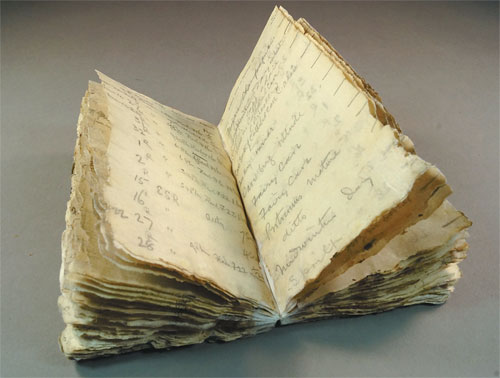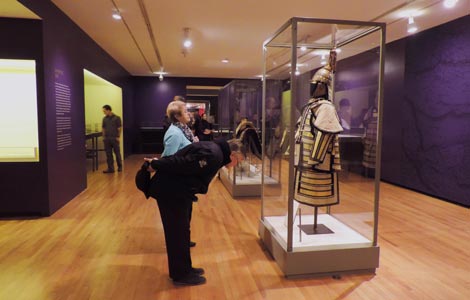Icebound notebook found after 100 years
Updated: 2014-10-24 07:58
By Agence France-Presse in Wellington(China Daily USA)
|
|||||||||
A photographic notebook from British explorer Robert Scott's ill-fated Antarctic expedition has been found after a century trapped in the ice of the frozen continent.
It belonged to scientist George Murray Levick and was discovered outside Scott's 1911 Terra Nova base during last year's summer ice melt.
Writing in the notebook remains legible, with Levick's name in the opening pages, but the binding has been dissolved by years of ice and water damage, the New Zealand Antarctic Heritage Trust's executive director Nigel Watson said.
"It's an exciting find. The notebook is a missing part of the official expedition record," he said.
"After spending seven years conserving Scott's last expedition building and collection, we are delighted to still be finding new artifacts."
Watson said the notebook pages were taken to New Zealand and individually restored, then given a new binding and returned to Antarctica, where the trust is working to preserve five sites used by Scott, Ernest Shackleton and Edmund Hillary.
Scott's expedition split into two groups after reaching the Antarctic, with the leader's contingent arriving at the South Pole on Jan 17, 1912, only to find that Norwegian Roald Amundsen had beaten them there a month earlier.
Scott and his companions later died of exposure and starvation.
Levick was in the other group, which traveled along the coast to make scientific observations but became stranded from the base camp when pack ice prevented their ship from picking them up.
The six men all survived the Antarctic winter by digging a cave in the ice and eating wildlife, including penguins and seals.
Other discoveries made by the trust include bottles of whiskey taken on Shackleton's 1907-08 expedition and lost negatives from his 1914-17 foray to the Ross Sea.
A Scottish distillery analyzed the Shackleton whiskey, finding it unexpectedly delicate "with a touch of smoke just at the finish", and painstakingly recreated the tipple for a limited run of 50,000 bottles that cost more than 100 pounds ($160) each.
In contrast, the contents of Levick's notebook are fairly mundane, comprising the dates, subjects and exposure details of photographs he took in the early stages of the expedition.
The notes correspond with pictures held in a collection of Levick's work at the Scott Polar Research Institute at Cambridge University in Britain.
Much more interesting was a scientific paper he wrote titled "Sexual habits of the Adelie penguin", which was lost until researchers at the Natural History Museum in London rediscovered it in 2012.
In it, he records observations of the penguins' "depraved" habits, including homosexual behavior and males trying to mate with the bodies of dead females.
The explorer was so horrified at the penguins' antics that he wrote down some of his observations in Greek so the average reader could not understand them and his paper was distributed to selected experts but never publicly released.
After surviving the Antarctic, Levick served in the bloody Gallipoli campaign during World War I and worked for British military intelligence in World War II. He died in 1956.
|
The notebook from Robert Scott's Antarctic expedition was found outside the explorer's 1911 Terra Nova base. Antarctic Heritage Trust / AFP |
(China Daily USA 10/24/2014 page3)
Most Viewed
Editor's Picks

|

|

|

|

|

|
Today's Top News
New York doctor tests positive for Ebola
Virgin America expands link with China Airlines
Alibaba's Ma heads for Hollywood in search of content
8 popular icons on traditional Chinese architecture
The Forbidden City relives in Vancouver Art Gallery
Top talent exits pose problems for CICC
Regulator says capital outflow fears unfounded
China's manufacturing expands in October
US Weekly

|

|

















